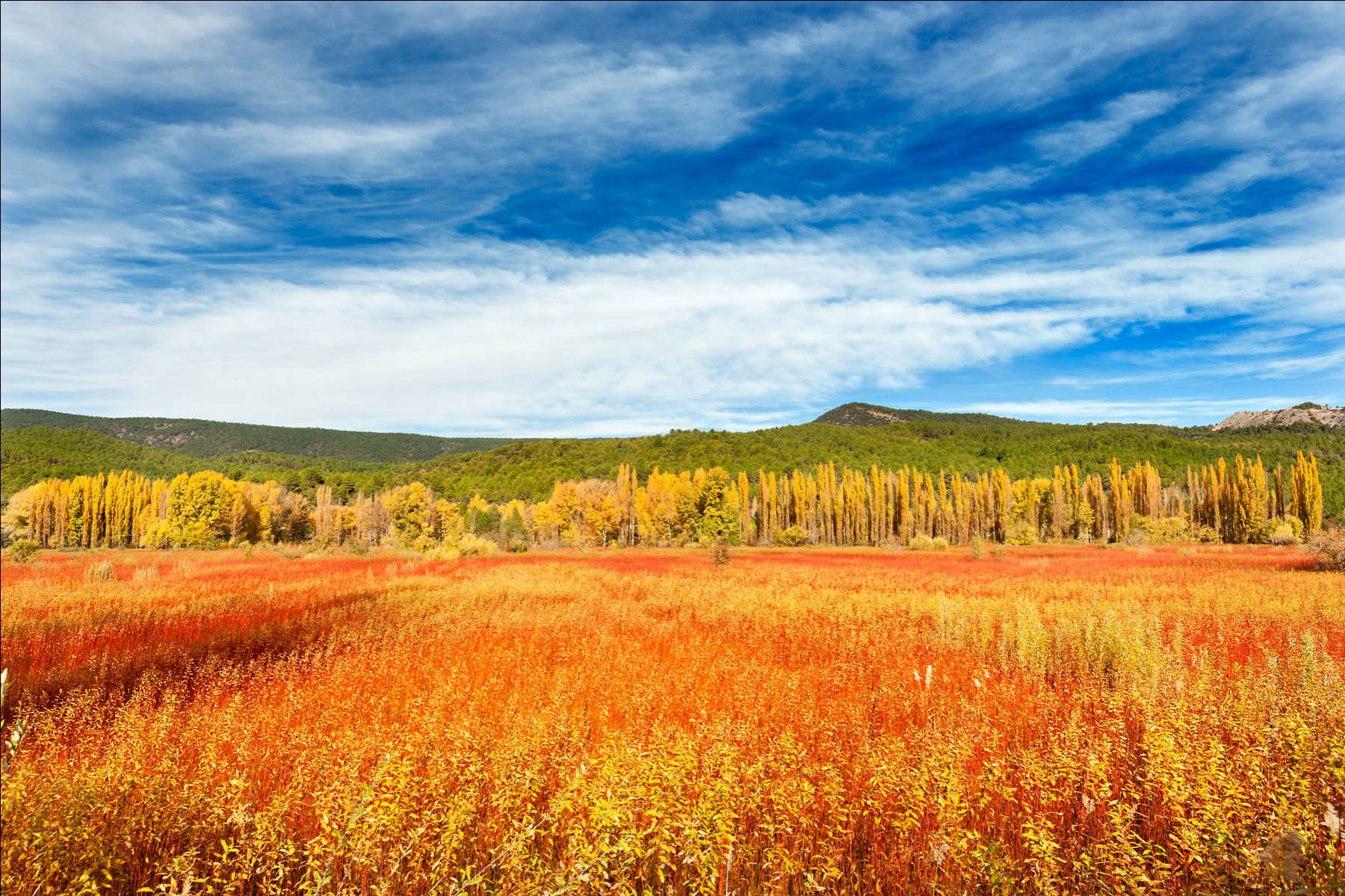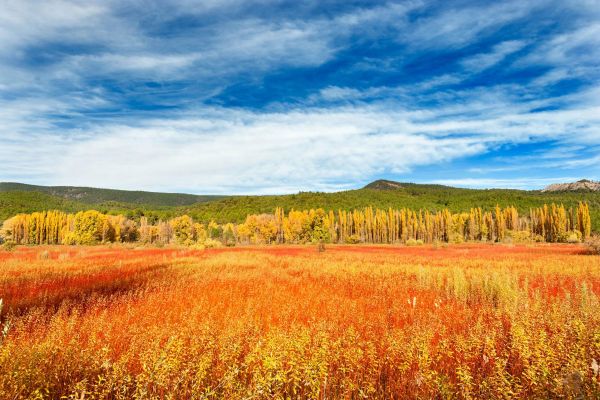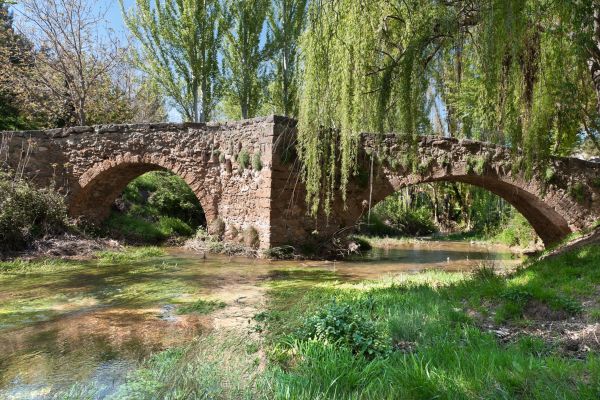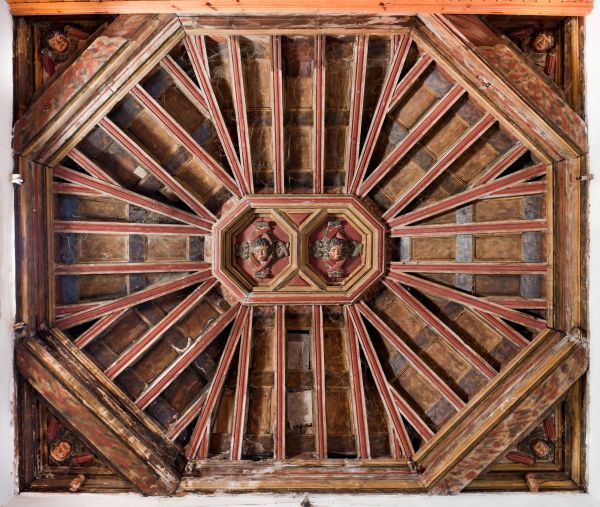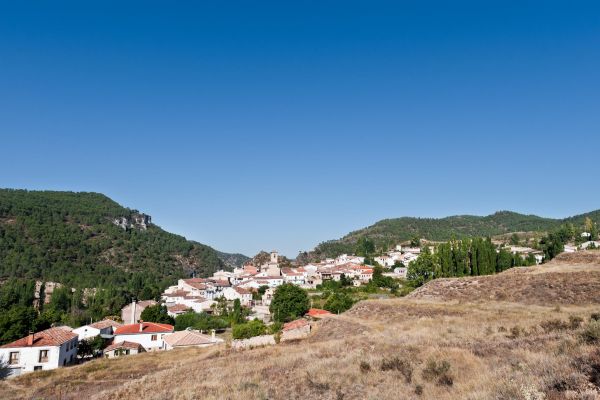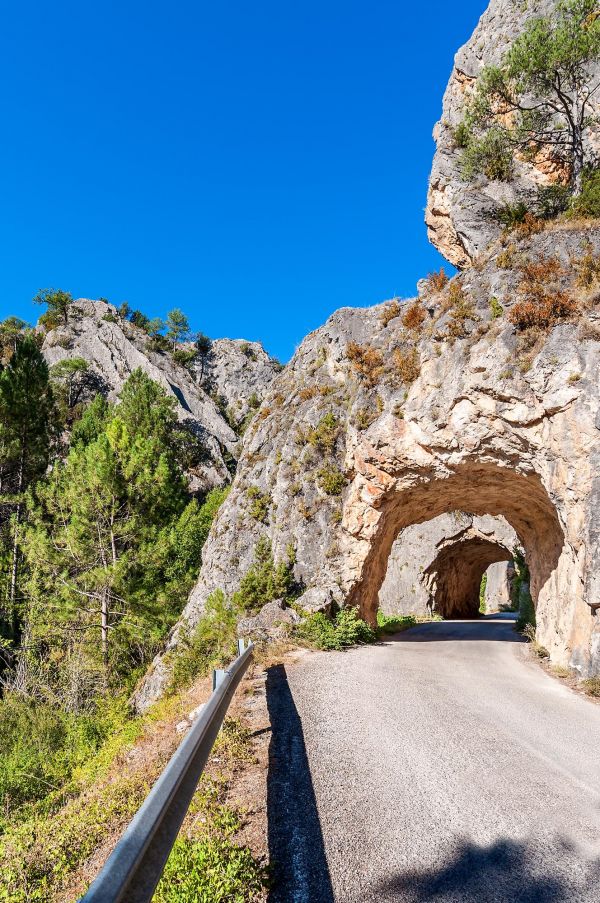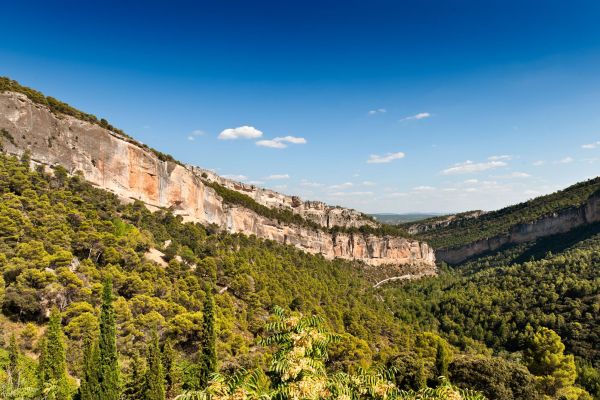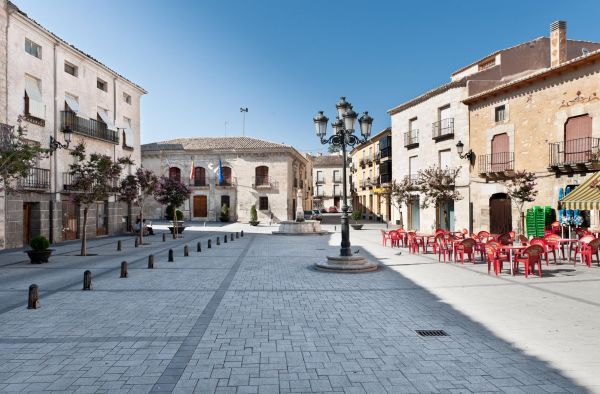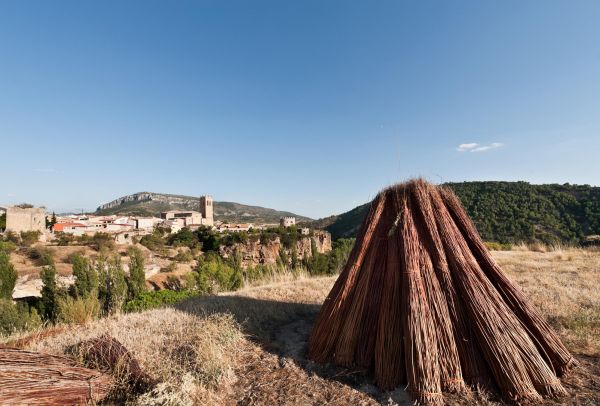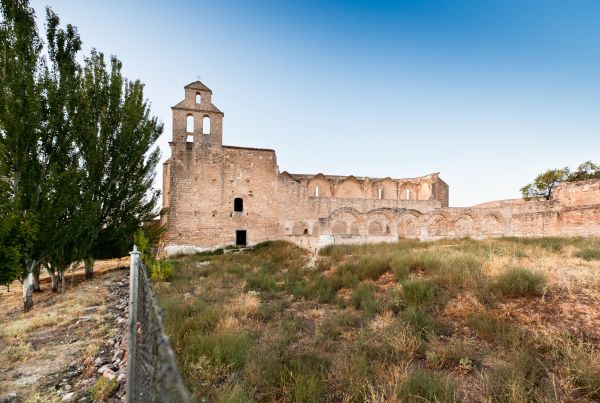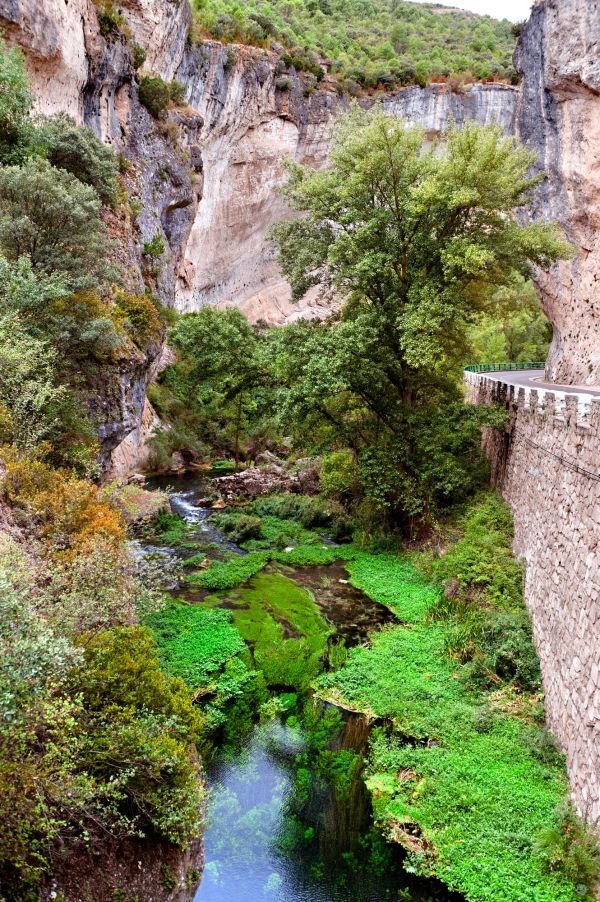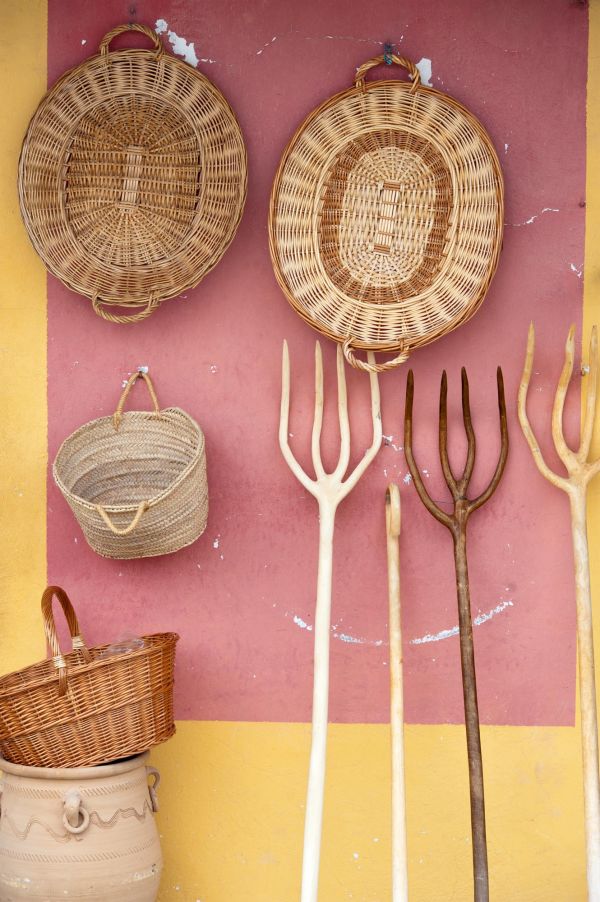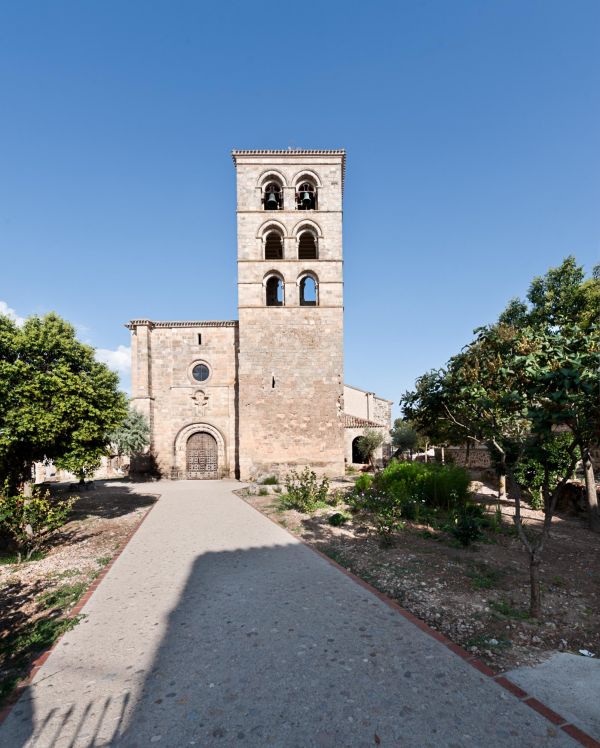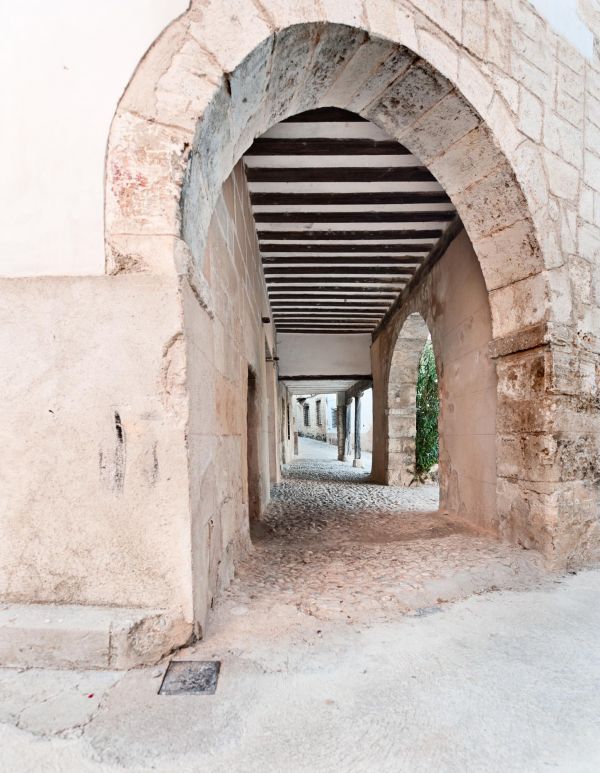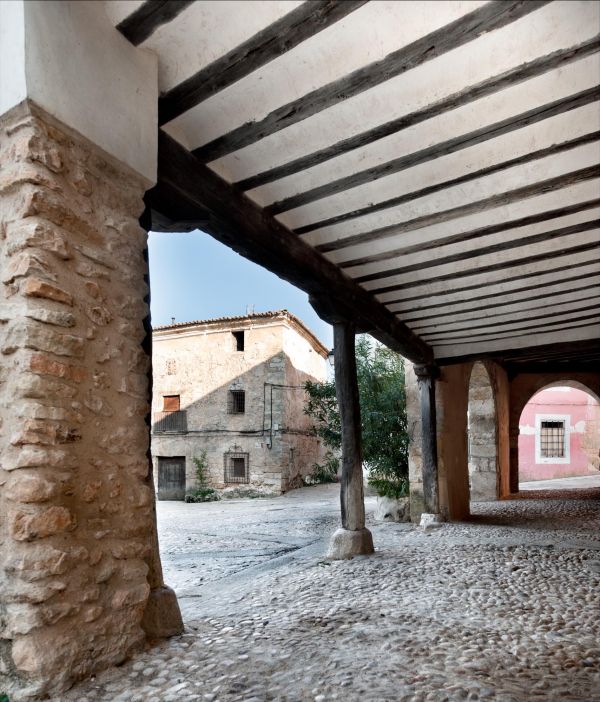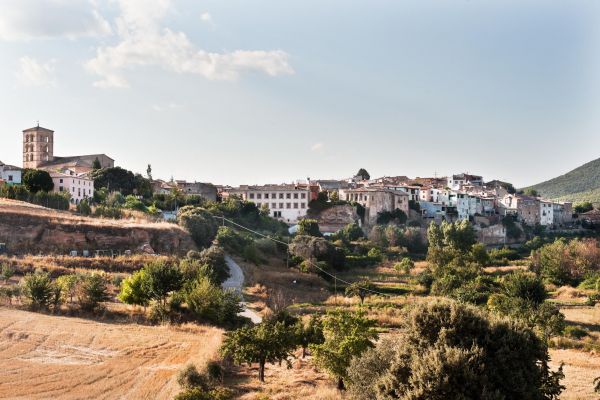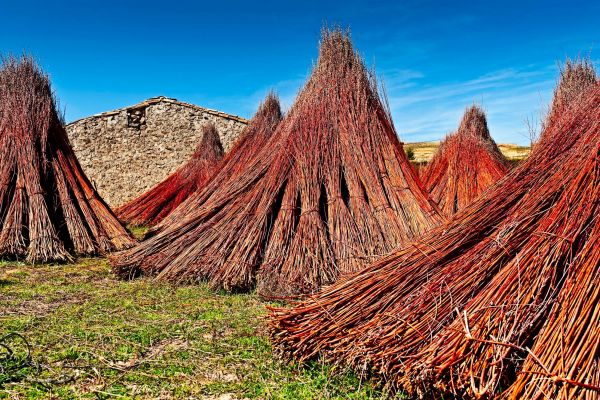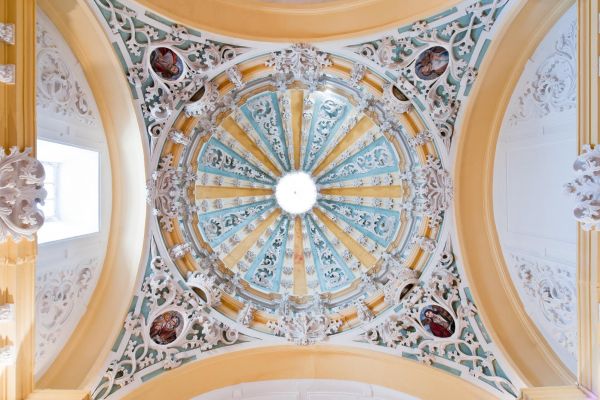Via ferrata and seas of wicker
Cuenca
We are in wicker territory, which acquired its reputation due its famous plantations, in the valleys of the Escabas and Trabaque rivers. Here we’ll find vast oceans of wicker, coloured green in summer and a spectacular, eye-catching red in autumn and winter; the red wicker plants are next to the highways, where white wicker dries in large swathes in the open sunlight. On both sides, vast gorges and striking mountains. This is some of the most impressive scenery in the north of Cuenca province, the border between Alcarria and Serranía (local regions); water, through the rivers, holds the whole picture together.
Therefore, the traditional trade of basketry stays alive in different ways: baskets for sale, baskets for picking olives, panniers, fisheries for crabs, cradles, skirts (walkers), rattles, armchairs, chests, etc.
The capital is Priego, one of the most beautiful and welcoming towns in Castilla-La Mancha. With Priego as the nerve centre, we can choose several short excursions, although all the places we recommend here can be visited in a day. The car journeys alone are worthwhile.
To the east, the Priego stretch is an impressive natural spot. There are several lookout points; we can go up to the Rodenal lookout point, for instance, for an impressive panoramic view. On the road from Priego to Cañamares, there are several via ferrata routes for the more adventurous; three excavated rock tunnels take us to the Puerta del Infierno (‘the Devil’s Gate’).
Fuertescusa, a charming, traditional mountain town in the heart of nature, is perfect for taking a stroll, the doorway to the mountains with the nickname of the Cuenca black forest, a zone with abundant vegetation, canyons, impressive gorges and dense pine trees heavily populated with wolves, mountain goats, deer and other species. The town offers several hiking trails to hidden spots: “Cucurucho Lookout Point”, “El hocino”, “La hocecilla”, “La cueva del águila”, “El cañizar”, etc. Fuertescusa has already 100 springs, many still with water that you will come across on these walks.
To the north of Priego, it’s worth passing by Valdeolivas to visit the parish church of the Assumption: in its apse, a majestic Christ Pantocrator dated from the first quarter of the 14th century is perhaps the most interesting Romanesque painting from all Castilla-La Mancha.
To the south, in Villaconejos de Trabaque the interesting crafts and constructions such as the cave-cellars or "chozos". The town of Albalate de las Nogueras was a Berber settlement and after the Christian Reconquest, the current Church of the Assumption was built atop the Arabic mosque, a bridge between the Roman and the Gothic.
If all of this wasn’t enough, Priego offers a stroll full of interesting buildings: the Palace of the Counts of Priego, the Despeñaperros Tower, the Pernía House or the Molina Gate, the San Miguel de la Victoria convent, the church of St. Nicholas of Bari, etc.
May also be of interest to you
Castilla-La Mancha Tourism in 2023. All rights reserved.
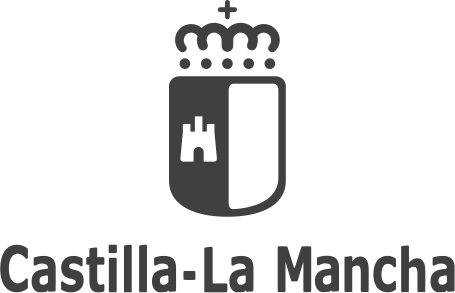
 365
365
